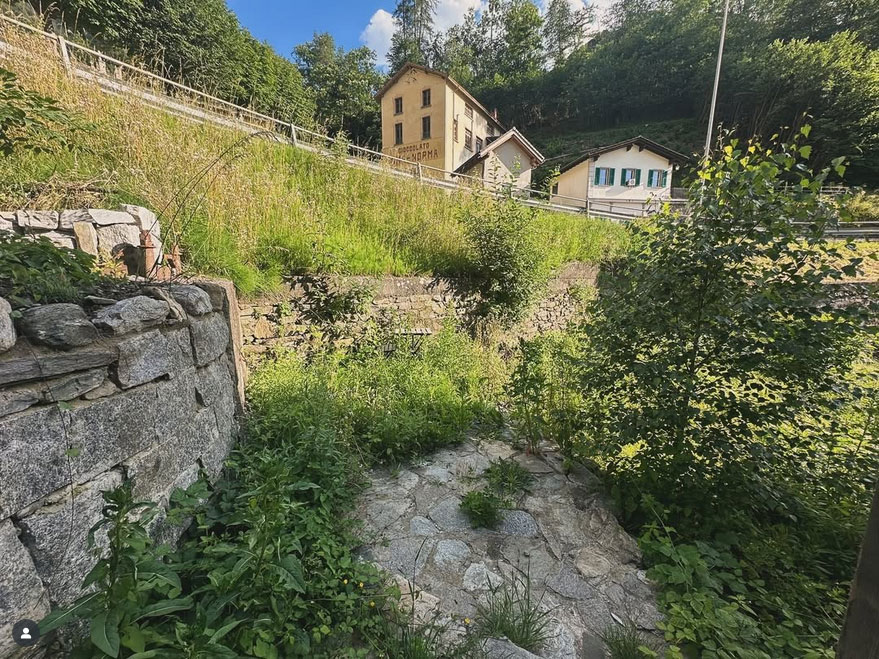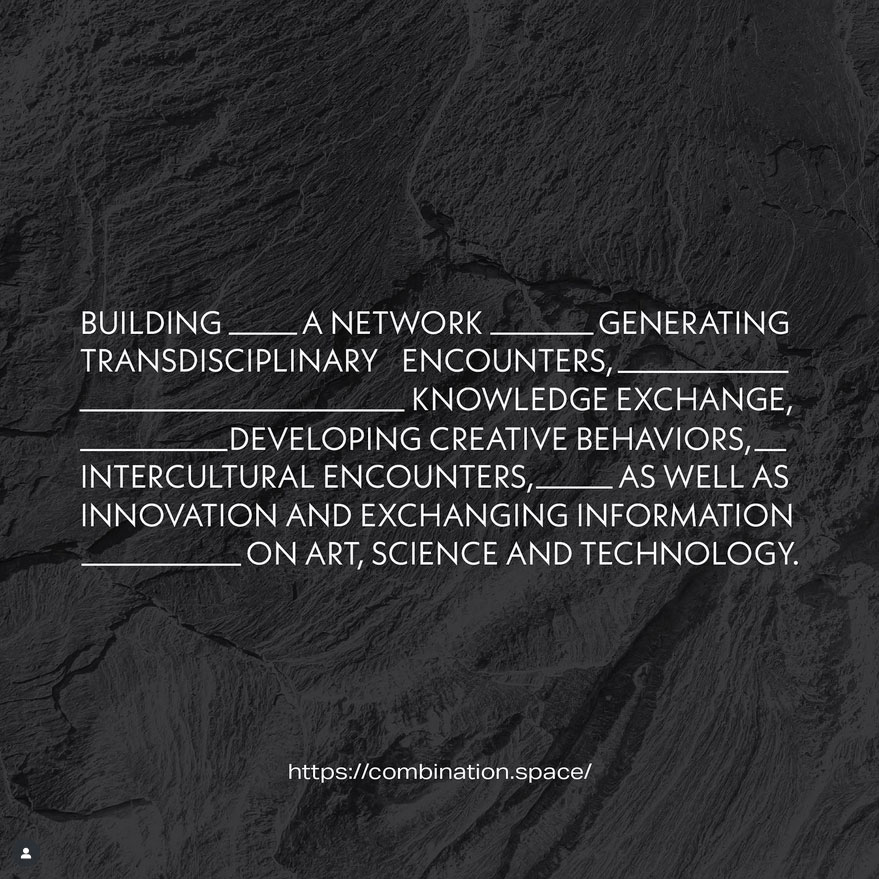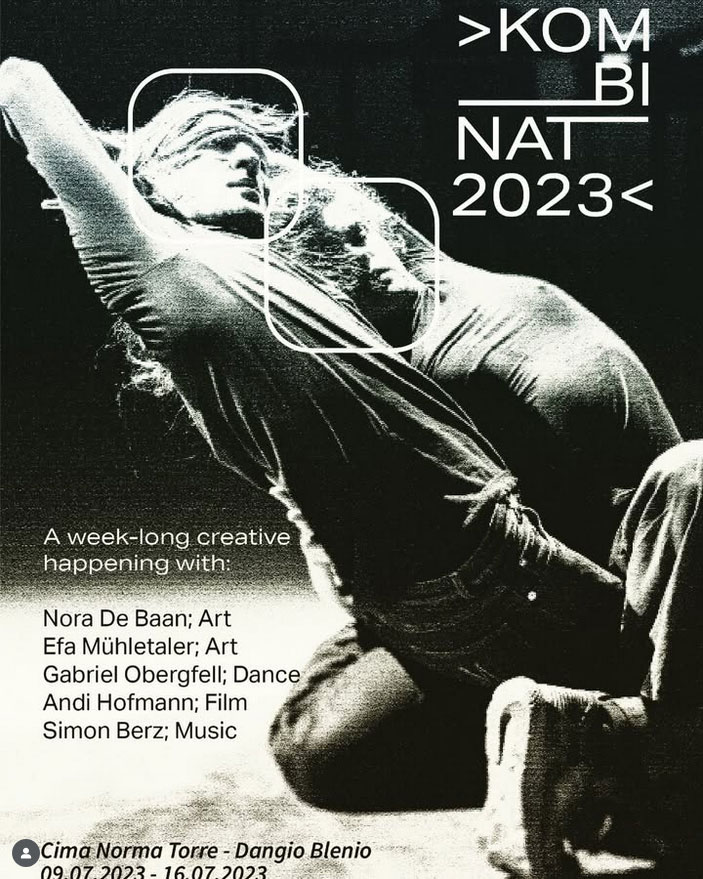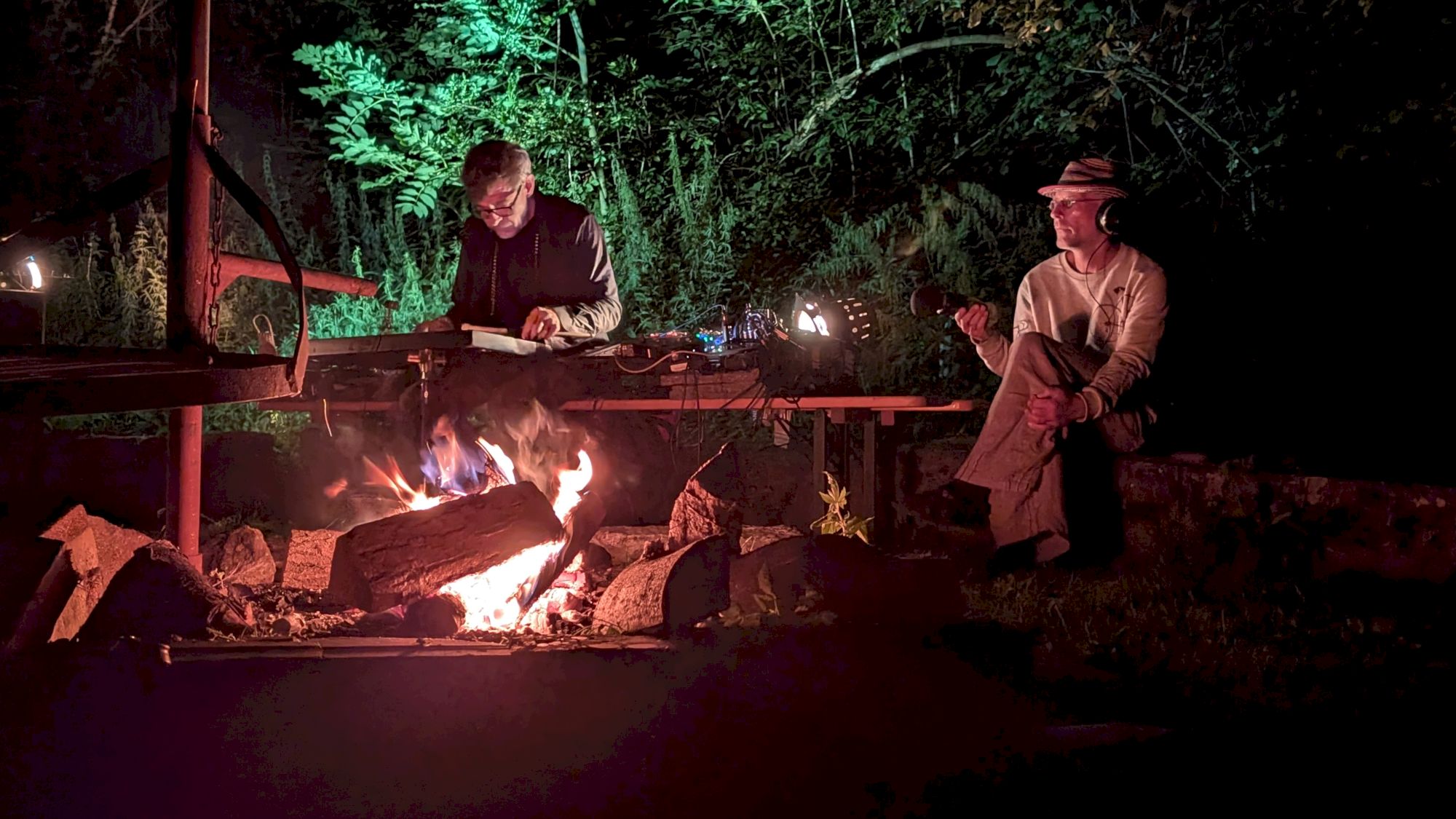Interaction, improvisation and transdisciplinarity: interview with Simon Berz at Home Made 2025
Published 7 September 2025 by la rédaction
We met Simon Berz this summer in Salenstein-Mannenbach, on the Swiss side of Lake Constance, where SGMK was organizing the 20th edition of its Home Made summer camp. Makery and PING set up a radio studio there. Simon, a long-time companion of SGMK, spoke to us about his career as a musician and multidisciplinary artist, and the projects he is developing at his art center, Combination Space. Interview.
Makery: Can you introduce yourself?
Simon Berz: I’m Simon Berz. I’m finally a drummer. I played in punk jazz bands, improvised music first. Then I started to be more interested in electronics and amplifying drums. I was in bands like Apparat in Berlin, we played electronics with live instruments 20 years ago. This had a deep impact on me to extend the drums in this way. At that time in Berlin it was really common to play with the computer. You didn’t know what the DJ or the musician was doing behind the screen. As a drummer, I was bored about that. But then I found an album by Apparat in a record store and I wrote him an email saying: “I’m a drummer and I look for electronic musicians.” It turns out he was really looking for a drummer and we started a band. It was a very nice experience finally to intertwin acoustic instruments and electro-techno.
But it was more and more boring for me to have the headphones on. I realized I was not “an apparat” – funny enough there is this book written by the former drummer of Kraftwerk Wolfgang Flür when he left the band, entitled “I Was a Robot” (laughs).
Then I involved myself more in the DIY scene. I met SGMK and started to make self-made instruments. I had a really nice workshop with Nic Collins. He came also once at Home Made. I will never forget this moment when a battery, a loudspeaker and some paperclips changed my life. I realized I can do that by myself: playing these electro-acoustic interactions with a battery and a loudspeaker. I was freaking out and I realized I was – and I am still – a little boy deeply influenced by Jimi Hendrix and Deep Purple. I accepted this and it came to my mind there was a missing link. We did have electric guitars, electrified instruments but we did not have the electrified drums. It was the time I had my own music school and I realized we just had these MIDI drums. I said to myself: “Now, what happens if I start to amplify stuff with piezo microphones and making feedbacks?” So I started to build this rocking desk. I had a normal drum set with amplified drumsticks and a lot of punch from piezos on the drums, and effects and amplifier behind.
I realized I haven’t to do anything. I can put the drum sticks on the skins and it started already a party time. I started to play solo shows and bands: Fell is one band, it lasted 10 years, also the band Superterz which was touring with Nils Petter Molvær and Kondo Toshinori, and some others.
This had a deep impact but I also then realized after 15 years that it was over. I wanted to dig in deeper: I decided to study transdisciplinary fine arts in Zurich. I started by making wireless drumsticks to get rid of all these cables. I worked with two universities where I had the chance to get a carbon stick that can really smash hard and detect the movements. I ended up again with Ableton Live. I knew Ableton from the beginning, because Apparat was close to the inventors, Gerhard Beles and Robert Henke, aka Monolake. It was clear to me that the software was good. I was able to play beats, and also get the data. With the sticks for example, you can retrieve the X, Y, Z data of a movement. We had a working prototype. But eventually I got not anymore interested, because a lot of these new instruments came quickly to the market that year, from the SuperBooth in Berlin.
I had already founded my own school and I did not want to be a producer of new instruments at the SuperBooth, I didn’t want to go into this music business. My brother founded the first green party in Switzerland, it also influenced me to say no. And the studies of fine arts had led me completely to another way. I put my sticks in ink – I went many times to China and Japan on tour – and I started to draw pictures with them. Then I came back to SGMK where I met all these freaks (laughs), this culture of sharing.
You have stones on your drum set. Is it a usual artistic practice of yours to mix natural things and technology?
Absolutely. A very simple thing happened to me once, when I was on holidays in the French Alps. I was cycling home and suddenly a Steve Reich’s score played on my wheels. I stopped the bicycle, took 30 kilos of stones, and back to Switzerland I started to build a sound installation. After different iterations, I amplified the stones wich had this really soft sound. And I learned a lot with that. I made this little instrument called Tectonic now, thanks to a grant I got from Zurich city to go to Husafell, Iceland, where Pall Gudmundsson build this kind of instruments, for Sigur Rós, Arvo Pärt, Evelyn Glennie…
This was very crazy. I found these five stones which I have here right now in ice storms. You have only five minutes of survival in the middle of an ice storm, you know. Artistically it was very interesting to me, it’s like meeting a beautiful partner in a party over there, falling in love immediately and then working together on this love. They are just found stones. It was all about this very short harsh moment in the Icelandic landscape to say “ding dong dong dong dong. This is it.” Only after you start to think about what they can do. And it’s so funny, these stones are now touring between Cuba and Japan. For example in Indonesia it fits perfectly in the gamelan music, because it’s naturally tuned. We are transdisciplinary. It opens so much perspectives for me as a white man to come to Indonesia and say : “let’s collaborate together, I come with five million years old stones. Nobody knows how they sound. Me neither. We just experiment, to find out how you sound and how you are, to communicate.”
Let’s talk about your place, Combination Space, where you develop the concept of “permacircularity”. What is it?
I was touring a lot and I had my space in Berlin, and my school in Zug, but I felt at home nowhere, I didn’t find my stuff. I had the desire to have an atelier, where I can keep and watch my art, it’s really important to sediment this. I found this old chocolate company, Cima Norma in Val de Plenio, and I got by accident their old wood factory. I started to renovate it, I also had access to the garden. And the pandemic happened. During the lockdown, I started gardening, I had no idea about permaculture, but instantly I thought about that, read a bit on it, and started to make a biotope. What happened was insane : so many animals, snakes, lizards, crazy big insects, new flowers, new plants showed up.

I had the idea to make an event in the permaculture garden about diversity. We know that we have a huge problem in the world with monoculture : we lose spaces, we lose creativity through Spotify, we lose original expressions from humans, and to me it is similar, it relates obviously with the concepts of mono versus perma culture. I started what I called Kombinat sessions, while I think it’s very interesting just to ask people what they think, how we can develop diversity. For example what we witness here is a biotope of craziness (laughs), but seriously we must ask ourselves how to protect this in this really crazy world of Spotify and artificial intelligence and commercializing. My background comes from pedagogy, I studied pedagogy towards disabled people. I developed my own school. I think what matters today is the environment, and psychologically, personal empowerment. I see a lot of young people coming from the sound world, from the art schools, who are extremely lost, highly educated, highly skilled, but with no orientation. We must take care of all the different generations and find out what we need together.

I was already teaching music at primary school first, then in music classes. I studied pedagogy towards handicapped people, but unfortunately only the theoretical part, I can’t have been able to get practical on this because I got a grant to go to New York to study drums. I had a very hard moment there, very dangerous, but I survived. When I came back to Switzerland I decided to really dig in, I was convinced we need another education, an alternative to the actual education system. I founded a school in Zug, the most expensive and richest place in Switzerland. Glencore, as well as Shell, for example, are there. It was a very funny experience to see CEOs in my school playing blues together with Syrian refugees, and then talking about gasoline. I realized what matters is to bring human beings together to share. It’s a very idealistic idea, but it works, and we have experimented with this creative transdisciplinary music pedagogy for 25 years now. I’m not anymore a teacher, I teach the teachers now, so I go mostly with energy, creativity, and chaos with the kids on the drums. I’m perhaps a cultural navigator, certainly not a coach. My credo would be : “let’s see together where we are, who we are, what you would like to do. We cannot predict what will happen between people, it’s a constant interaction.” And we come back to the permaculture idea.

You do projects and performances that involve sometimes hundreds of people. Can you speak about one or two of these?
I did many projects with kids of all generations, nationwide. Once in Zurich, we built shopping cars, put trash in and on the shopping cars, and we had a parade just to show we were using a trash sound machine and playing together. 30 000 people showed up. This was deeply influenced by my experiences in Africa.
Another one: I was on tour in New Orleans five years after the Katrina storm. I realized that people were still traumatized, there were mountains of fridges and stuff on the streets. We found instruments, radios, tons of stuff. I already had a project in Berlin and Zurich to build and hack instruments from trash. In New Orleans, it was insane. We invited famous jazz musicians to play with us. This was completely mind blowing. We had the best, most incredible improvisers. It’s a project called Liquid Land.
LIQUID LAND Documentation film
I think we in Europe are now at a turning point. There is a wave of creativity and knowledge coming from Asia and Africa, because people from there know about handling disasters, handling recycling. We can learn a lot from them.
Do you have specific mediation processes to make people from different backgrounds and cultures to meet and collaborate?
First we have to get out of stigmatization. Some people are too quick to assume that because you work with someone, you think like them and share the same political views. Or that you don’t really belong where you live, that you look down on the local population because you travel a lot and are not often at home. I want people here and around, I am interested in their ideas, but we do something together, we do sound, we do visual interactions (I am thinking of what we do with Andi Hoffmann who runs Combination Space with me). Eating and cooking together is also very important. Having walks together… In a word, to interact for real, which is more and more difficult in big cities, and in general everywhere, because of social media. At Combination Space, we have hanged second-hand socks on the doors, we ask people to put their phones in. I am very into digital detox, I read a lot on brain science, pedagogy and education…I would say the important thing is to share and remain as aware as possible of what transdisciplinarity entails in the times we live in.

Listen to the interview on P-Node radio:
Find out more on Rewilding Cultures and Feral Labs Network in Makery
